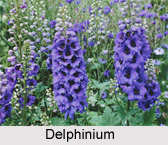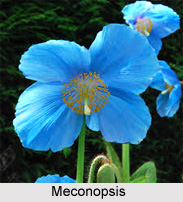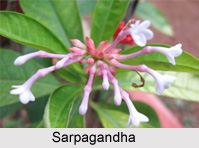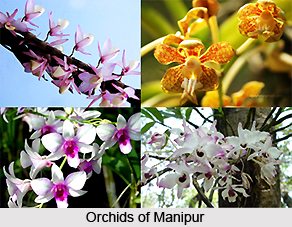 Uttarakhand comprises of 13 districts spreading over an area of 51,082 sq km, Floristically, it falls under the west Himalayan Biogeography zone and it is well-known for floral diversity similar to any other Himalayan region in the country with an estimated 4,000 species of flowering plants having great economic medicinal, aromatic and artistic value. The endemic plant wealth of Uttarakhand is worth mentioning as it ultimately forms part of the National heritage. Uttarakhand Himalayas have about 116 species asindigenous group. Are naria ferruginea; Chimonobambusa jaunsarensis, Gentian tetrasepala, G. saginoides, Meeboldia solenoids, Microschoenus duthiei, Trachycarpus takil, Poa rhadina, etc are some such species.
Uttarakhand comprises of 13 districts spreading over an area of 51,082 sq km, Floristically, it falls under the west Himalayan Biogeography zone and it is well-known for floral diversity similar to any other Himalayan region in the country with an estimated 4,000 species of flowering plants having great economic medicinal, aromatic and artistic value. The endemic plant wealth of Uttarakhand is worth mentioning as it ultimately forms part of the National heritage. Uttarakhand Himalayas have about 116 species asindigenous group. Are naria ferruginea; Chimonobambusa jaunsarensis, Gentian tetrasepala, G. saginoides, Meeboldia solenoids, Microschoenus duthiei, Trachycarpus takil, Poa rhadina, etc are some such species.
Besides, many plant species new to science have been added from different parts of Uttarakhand. Some such species are Anemone raui, Arenaria curvifolia, Carex nandadviensis, List era nandadeviensis, Saussurea sudhanshui, Euphorbia sharmae, Androsace garhwalicum, etc. More interesting to note is the presence of one of the smallest flowering plants Arceuthobium minutissimum, parasitising over Pinus gerardiana (Chilgoza) and the tallest plant of Asia, the Pinus roxburghii, in Uttarkashi district. The sacred Mulberry, Morus serrata, said to have been planted by the Adi Shankaracharya at Joshimath, the tree fern Cyathea spinulosa, the gigantic Aesculus indica on way to Panwali, the tall Shore a Robusta (Raja Sal) near Byasi are some other curiosities of the area. The narrative of the plant wealth of Uttaranchal will not be complete unless a mentioned about the sacred plants commonly used in worship in "The Abode of Gods". Besides, the earlier mentioned "Brahmakamal", Zanthoxylum armatum (Timur), Prunus puddum (Panya), Skimmia laureola, Primula denticulata, and Artemisia nilagirica, Eagle marvelous etc. are offered to deities. Some other representative and interesting plants of Uttaranchal are enumerated below with a brief description:
 The vegetation of Uttarakhand can be divided in the following zones:
The vegetation of Uttarakhand can be divided in the following zones:
1. Sub-Tropical Zone of Uttarakhand
The sub-tropical zone has pure as well as mixed forests of Shore Robusta (Sa I), the others being Lannea coromandelica (Jhingan), Buchanania lanzan, Dalbergia disso (Shisham), Haldina cordifolia (Haldu), Syzygium cumini (Jamun), Mallotus philippinensis (Rohini), Mitragyna parvifolia, Terminalia spp. (Myrobalans), Ficus spp. (Figs), Macaranga pustulata, Callicarpa arborea, Diopoknema butyracea (Chyura), Bauhinia variegate (Kachnar), Bomb ax cobia (Semal), Lydia claying (Pula), Schleicher oleos (Kokum), Holoptelea integrities (Karanj), Cassia fistula (Amaltas), Nyctanthes arbor-tristis (Parijat), Anogeissus latifolia (Bakli, Dhaura), etc. The shrubby vegetation is represented by Murraya koenigii, Carissa opaca, Clerodendrum viscous, Adhatoda vasica, Jasminum multiflorum, Solanum erianthum, Cal/icarpa macrophylla, Eranthemum nervosum, Phlogacanthus thyrsiformis, Jatropha curcas, Rhus parviflora, Dodonaea viscosa, Woodfordia fruticosa and many others.
2. Temperate Zone of Uttarakhand
The Temperate zone is marked by the presence of Quercus leucotrichophora (Banj oak), Rhododendron arboretum (Burans), Myrica esculent a (Kaphal), Leonia ovalifolia (Aynor), Ibex dipyrena, Quercus semecarpifolia (Kharsu Oak), Q. dilatata (Moru Oak), etc. The coniferous forests in this zone are unique. Pure stands of Pinus roxburghii (Chir Pine) and Cadres deodar (Deodar, Cedar), Abides windrow (Raga), Pinus wal/ichiana (Kail), Taxus wal/ichiana (Thuner, Himalayan Yew) at places give a pristine look to the slopes. The slopes in temperate zone also have insectivorous plants like Drosera peltata and species of Utricularia. Another such species is Pinguicula alpina seen in Martoli Bugyal, Kumaon. The Saprophytes and Parasites are also well represented by Monotropa unit/ora, Dendrophthoe falcata (Banda), Balanophora in volucrata, and species of Viscum, Korthalsella, Arceuthobium, Scurrula, etc. The zone has a variety of useful plants, some of them well known for centuries. These include Cedrus deodar a, Pinus spp., Abies pindrow, Quercus spp., Aconitum heterophyllum, Paeonia emodi, Swertia chirayita, Bergenia ciliata, Dioscorea deltoidea, Angelica glauca (Choru), etc.
 3. Sub-Alpine and Alpine Zones of Uttarakhand
3. Sub-Alpine and Alpine Zones of Uttarakhand
The altitude above 3,000 metres is generally considered a zone of sub-alpine and alpine vegetation. The tree species are represented by Pinus wallichiana, Abies pindrow, Prunus cornuta, Acer caesium, Betula utilis (Bhoj Patra) and Salix sp. Species of the genera Cotoneaster, Rosa, Berberis, Ribes, Junipers, Rhododendron anthropogenic, Rhododendron campanulas are the shrubby components of the zone. The herbaceous vegetation is represented by a number of species of genera Po ten till, Primula, Aster, Saxifrage, Achaean, Delphinium, Polygonal, Corydalis, Pleurospermum, Meconopsis, Pedicularis, Saussurea, Rheum, Silene, etc. The Bugyals of this zone are well known for a rich and diversified flora. Plant species like Nardostachys grand flora (Jatamansi), Podophyllum hexandrum (Himalayan May-Apple, Papri), Picrorhiza kurrooa (Kutaki), Gentian burro, Armenia benthonic (Bal char), Rheum moorcroftianum (Dole), Ephedra gerardiana, Dactylorhiza hatagirea (Hatthajari), etc., common in this zone, are of immense medicinal value.
The floral diversity is further exhibited by the species that grow in the rain shadow areas of Uttaranchal. Such species develop adaptive characters to survive the wrath of adverse climate. Labium rhomboid, Thylacospermum caespitosum, Acantholimon Iycopodioides, Dracocephalum heterophyllum etc. are a few such examples.
Orchids
Uttarakhand has more than 225 species of this charming group, well known for ornamental flowers with great horticultural potential and long shelf life. Aerides, Coelogyne, Cymbidium, Dendrobium,
 Thunia and Rhynchostylis, for which Mandai, Baram, Shandev, Dafia Dhoora, Kaflani, etc are rich. Among the global orchids, species of Calanthe, Habenaria, Anoectochilus, Satyrium, etc are fairly common while`the Lady`s Slipper Orchid-Cypripedium is scarcely distributed.
Thunia and Rhynchostylis, for which Mandai, Baram, Shandev, Dafia Dhoora, Kaflani, etc are rich. Among the global orchids, species of Calanthe, Habenaria, Anoectochilus, Satyrium, etc are fairly common while`the Lady`s Slipper Orchid-Cypripedium is scarcely distributed.
Many small river valleys offer wonderful experience to nature lovers and hikers. The vast open hay field, above the tree line present endless views of the variously coloured Himalayan flowers. The most interesting of them, aesthetically or botanically are seen in the higher altitudes, from 2,450 metres and above. The arrival of spring brings forward an uprising of colours, when the Semal and Palash put the lower altitude forests on fire with their blazing red flowers. It is also the time for Burans to spread its fire at a height of or above 2,450 metres adding colour to the blue and white panorama of snow. The flowers do not grow only in the Valley of Flowers but are found on different treks habitually upto great heights as also on the hay field and even in rock cracks or moraines.











